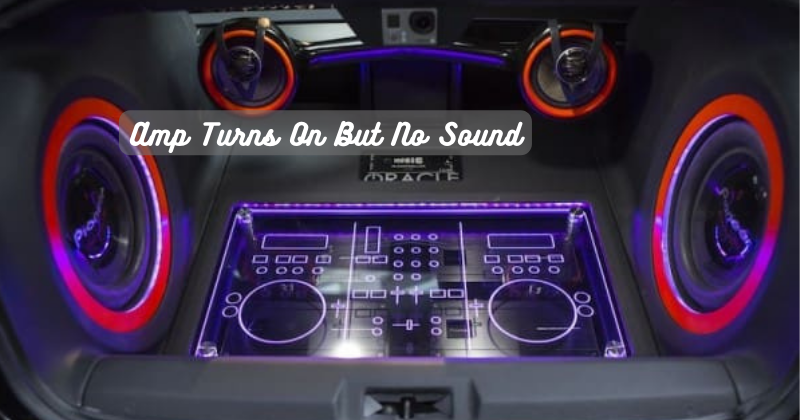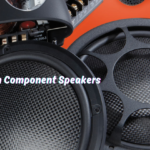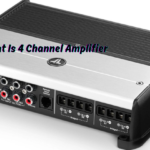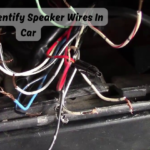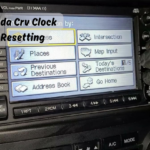When you turn on your amplifier, the first thing you expect is to hear sound. However, there may be times when your amp turns on but produces no sound at all. This can be a frustrating experience, especially if you are in the middle of a jam session or about to start a performance.
There could be several reasons why this happens and it’s important to troubleshoot the issue to get your amp working again. In this guide, we will discuss the possible causes and solutions for when your amp turns on but produces no sound. We will also provide tips on how to prevent this from happening in the future so you can enjoy uninterrupted music playtime with your amplifier.
Possible Causes and Solutions
There are several reasons why your amp may turn on but produce no sound. Here are some of the most common causes and their corresponding solutions:
1.Faulty Cables
One common cause for no sound coming from your amplifier is faulty cables. Cables may become damaged over time due to wear and tear, causing them to lose their ability to transmit sound. Also, if the cables are not connected properly, it may result in no sound coming from your amp.
Solution:
To solve this issue, check all the cables connecting your amp to your instrument and speakers. Make sure they are securely connected and not damaged. If you find any damaged or loose cables, replace them with new ones to restore sound output.
It’s also a good idea to regularly inspect and maintain your cables to prevent such issues from occurring in the future.
Remember, even high-quality amps and speakers can’t produce sound if the cables connecting them are damaged or not properly connected. Always make sure to check your cables first when troubleshooting amp sound issues.
2. Speaker Damage
Another possible cause for no sound coming from your amplifier is speaker damage. If one or more of your speakers are damaged, it may result in no sound output or distorted sound. This can happen due to overloading, age, or other external factors such as exposure to moisture or extreme temperatures.
Solution:
To solve this issue, check each speaker individually by playing music through them one at a time. If you notice any issues with a specific speaker, it may need repair or replacement. It’s always a good idea to have spare speakers on hand in case of emergency situations like this.
To prevent speaker damage, make sure to properly maintain and clean your speakers regularly. Avoid overloading them with too much power or playing music at extremely high volumes.
3. Tube Issues
If your amplifier uses tubes, one possible cause for no sound could be due to tube issues. Tubes can become damaged or worn out over time, resulting in no sound output. This can also happen if the tubes are not properly seated in their sockets.
Solution:
To solve this issue, check the tubes by visually inspecting them for any signs of damage or wear. Also, make sure they are securely connected in their sockets. If you notice any damaged or worn-out tubes, replace them with new ones.
It’s important to regularly check and maintain your tubes to prevent sound issues. Avoid turning on your amp immediately after transporting it, as this can cause the tubes to become loose or damaged.
4. Input Selector Switch
The input selector switch is responsible for routing the signal from your instrument to the amplifier. If this switch is not set correctly, it can result in no sound output from your amp.
Additionally, the switch may become dirty or faulty over time, causing signal issues and resulting in no sound.
Solution:
To solve this issue, make sure the input selector switch is set to the correct setting for your instrument. Also, try cleaning it with compressed air or contact cleaner if you suspect it’s dirty. If the switch is faulty, it may need to be replaced.
To prevent issues with the input selector switch, avoid constantly switching between settings and make sure to regularly clean it to keep it functioning properly.
5. Power Supply Failure
If your amplifier’s power supply fails, it can result in no sound coming from your amp. This can happen due to various reasons such as power surges, overheating, or internal component failure.
Solution:
To solve this issue, check the power supply by testing it with a voltage meter. If there is no power output, you may need to replace the power supply unit. It’s recommended to have a backup power supply on hand in case of emergencies.
To prevent power supply failure, avoid using your amp in extreme temperatures, and make sure to regularly clean and maintain it. It’s also important to use a surge protector to protect your amp from power surges.
6. Preamp Problems
The preamp is responsible for amplifying the signal from your instrument before sending it to the power amp section of your amplifier. If there are issues with the preamp, it can result in no sound output.
Solution:
To solve this issue, check the preamp by visually inspecting it for any signs of damage or wear. Also, make sure all the tubes and other components are properly seated. If you notice any issues, consult a professional for repair or replacement.
To prevent preamp problems, avoid turning on your amp immediately after transporting it, as this can cause damage to the preamp. Proper maintenance and regular inspections can also help prevent issues with the preamp.
Does Preventing These Issues Mean No More Sound Problems?
While following these tips and maintaining your equipment can significantly reduce the chances of experiencing no sound output from your amp, there may still be instances where issues arise. In these cases, it’s best to consult a professional for proper diagnosis and repair.
Additionally, always make sure to properly handle and transport your amplifier to prevent damage to its components. With proper care and maintenance, your amplifier can continue producing great sound for years to come.
So, regularly inspecting and maintaining your equipment is crucial in preventing any future sound issues with your amplifier. Remember, the key to a long-lasting amp is proper care and maintenance!
Mistakes to Avoid
To ensure your amplifier continues performing at its best, there are a few common mistakes you should avoid. These include:
- Using damaged or low-quality cables
- Overloading your speakers with too much power
- Ignoring regular maintenance and inspections
- Not using a surge protector
Avoiding these mistakes can help keep your amp in top condition and prevent any sound issues. Remember, taking care of your equipment is an investment in its longevity and performance. So, make sure to follow these tips and enjoy uninterrupted sound from your amplifier.
FAQs
Should I turn off my amplifier when not in use?
It’s a good idea to turn off your amplifier when not in use, as this gives the components a break and helps prevent overheating. It also saves energy and reduces wear on the internal components.
Can using the wrong power supply damage my amplifier?
Yes, using the wrong power supply can potentially damage your amplifier’s internal components. Always make sure to use the correct power supply recommended by the manufacturer.
How often should I clean my amplifier?
It’s recommended to clean your amplifier at least once every few months, or more frequently if you notice any buildup of dust or debris. Regular cleaning helps prevent damage to the internal components and keeps your amp functioning properly.
Conclusion
In conclusion, there are various factors that can contribute to no sound output from your amplifier, such as tube issues, input selector switch problems, power supply failure, and preamp issues. By regularly inspecting and maintaining your equipment and avoiding common mistakes, you can prevent these issues and ensure your amplifier continues producing great sound for years to come.
Remember to always follow the manufacturer’s recommendations for maintenance and seek professional help if needed. Happy playing! So, regularly inspecting and maintaining your equipment is crucial in preventing any future sound issues with your amplifier. Remember, the key to a long-lasting amp is proper care and maintenance!
